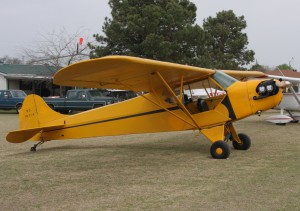 Paul Bertorelli contributes regularly to the AVweb Insider Blog, and I visit the site often to see what he has to say. The site attracts mostly pilot visitors, who tend to be more than a little opinionated and have no hesitation about telling you what they think. Paul isn’t shy about tackling subjects with the potential for stirring pilots up, and the comments to his posts have proven to be quite effective in generating lively discussions.
Paul Bertorelli contributes regularly to the AVweb Insider Blog, and I visit the site often to see what he has to say. The site attracts mostly pilot visitors, who tend to be more than a little opinionated and have no hesitation about telling you what they think. Paul isn’t shy about tackling subjects with the potential for stirring pilots up, and the comments to his posts have proven to be quite effective in generating lively discussions.
His latest post is titled “A Good Trainer Does All the Teaching,” in which he presents four ideas combined in a way that probably helped increase the comment count.
Idea #1 compares two different approaches to primary flight instruction (learning the basics). Some instructors provide relatively continuous verbal commentary, which can be accompanied by physical inputs to the controls. Any instructor knows the value of this approach under certain conditions, but Paul relates an example of a current teenage student who has proven to be what all instructors hope for. The young man demonstrates the ability to recognize what is going on that shouldn’t be and correct it with no inputs from Paul.
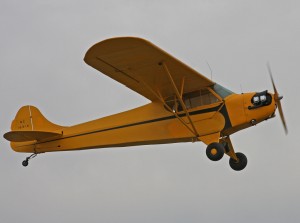 That led Paul to say in his post, “This reinforces another lunatic notion I’ve always had: Just about anyone who wants to can, with sufficient motivation and time, teach themselves to fly. A CFI’s (Certified Flight Instructor) job should be little more than keeping the airplane from cratering and knocking the sharp edges off whatever insurmountable learning barriers arise while this process progresses.”
That led Paul to say in his post, “This reinforces another lunatic notion I’ve always had: Just about anyone who wants to can, with sufficient motivation and time, teach themselves to fly. A CFI’s (Certified Flight Instructor) job should be little more than keeping the airplane from cratering and knocking the sharp edges off whatever insurmountable learning barriers arise while this process progresses.”
Idea #2 arises from the fact that Paul is teaching the kid to fly in a J-3 Piper Cub. For those unfamiliar, the Cub is a 1940s-era airplane considered a classic. And while many pilots have earned their wings in Cubs in the intervening years, it’s safe to say that today it’s as rare as an honest politician.
One sticky glitch cropped up when Paul began looking for examples of “pre-solo quizzes.” Before flying the first time without an instructor, student pilots have to demonstrate proficiency in certain practical skills (like takeoff and landing . . . duh . . .) and prove they have a minimum required level of aeronautical knowledge. Paul found that the majority of these quizzes to assess knowledge are built around regulations, airspace, and radio use at towered airports. The Federal Aviation Regulations (FARs) stress these topics, but that doesn’t apply well to training in a Cub with no radio at a non-towered airport.
Paul puts it this way: “Several of the quizzes I found were structured as though the flying is assumed, as though radio operation is the real art and stick and rudder is just a means of putting the radio where you want it. I’ll concede the point, for that is what we have become.” Paul can design his own quiz, of course, but that’s not his point, which brings us to idea #3.
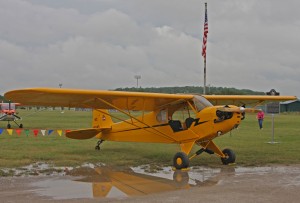 The Piper Cub may be the best trainer ever built, and not just for primary students. He justifies this premise by pointing out that the Cub’s many faults are really attributes. He lists a number of them, and I won’t repeat them here, except for one.
The Piper Cub may be the best trainer ever built, and not just for primary students. He justifies this premise by pointing out that the Cub’s many faults are really attributes. He lists a number of them, and I won’t repeat them here, except for one.
Within aviation lore, there’s a saying that says, ‘Taildragger pilots are the only real pilots.” Paul mentions that he’s never been one to agree with that. But as a result of his recent experiences conducting primary training with his young student, he’s beginning to re-think it. This idea received the most attention in the comments, and I suspect he knew it would.
For any non-pilots who may by chance read this, land-based airplanes have two landing gear configurations: conventional (commonly referred to as “taildraggers”), and tricycle (one commenter suggested we begin calling them “noserollers”). I like it.
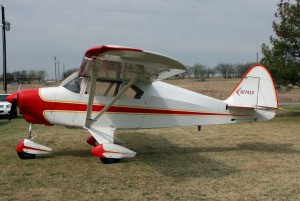 A tricycle gear airplane has a nose gear in front of main gear, and the taildragger reverses that configuration with a tailwheel behind the main gear. With the exception of differences in the amount of aerodynamic drag, there’s no difference in the flying characteristics between the two. But on the ground, it’s a different story.
A tricycle gear airplane has a nose gear in front of main gear, and the taildragger reverses that configuration with a tailwheel behind the main gear. With the exception of differences in the amount of aerodynamic drag, there’s no difference in the flying characteristics between the two. But on the ground, it’s a different story.
The FARs recognize the differences and require training and an instructor’s endorsement in a pilot’s logbook before operating a taildragger as pilot in command. When I received my training, the instructor handed me a video. In it, a simple demonstration got my attention.
A child’s tricycle is shoved from behind so that it speeds across an expanse of concrete. With no rider, the handlebars and front wheel wobble like crazy. But every time it looks as if it’s going to tip over and crash, it rights itself and keeps on going.
The demonstration continues with the tricycle shoved from behind. Within a few feet, the “taildragging trike” swerves hard rapidly in both directions and tumbles upside down across the concrete. This simple but effective experiment illustrates the key difference between taildraggers and noserollers.
First, a bit of physics. Like any object, an airplane has a center of gravity (CG). In both a taildragger and a noseroller, the CG sits somewhere between the main gear and the nose gear/tailwheel. For any object in motion, the “velocity vector” always acts through the center of gravity.
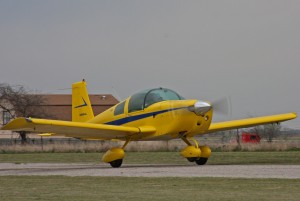 When a noseroller is in motion (think of the tricycle being shoved from behind) the CG (the seat) is forward of the main gear. Any upset from straight-forward movement tends to dampen out by self-correcting. But with a taildragger, if the velocity vector through the CG ever points outside of either main gear, it will keep right on going into a spectacular event called a “ground loop.” The result is often damaged gear, a bashed wingtip, and a propeller striking the ground.
When a noseroller is in motion (think of the tricycle being shoved from behind) the CG (the seat) is forward of the main gear. Any upset from straight-forward movement tends to dampen out by self-correcting. But with a taildragger, if the velocity vector through the CG ever points outside of either main gear, it will keep right on going into a spectacular event called a “ground loop.” The result is often damaged gear, a bashed wingtip, and a propeller striking the ground.
Back to Paul’s idea #3, does training in a taildragger help create better pilots? I’ve flown jet fighters, airliners, and a multitude of light airplanes, and I firmly believe there’s something to that premise simply because taildraggers are less forgiving of what Capt. A.G. Lamplugh called “inattention, incapacity, or neglect.” That said, pilots who have never flown a taildragger can be just as attentive to precise aircraft control. The difference is that they don’t have to be.
Pilots commenting on Paul’s blog jumped all over this one. I think the majority agreed that taildragger training is a good thing. I also think that most, if not all, of the agreement came from pilots with taildragger endorsements.
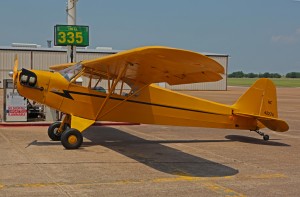 And for idea #4, how to modernize the best trainer ever built, Paul suggests one of the new Cubs currently in production: the Legend Cub or Sport Cub from Cub Crafters with a glass panel (electronic flight display). I think he has something by suggesting that this “. . . provides a useful link to the modern world of flight without giving up the extraordinary benefits of the old. When you get tired of watching the phony horizon on the glass, switch it off and watch the real one.”
And for idea #4, how to modernize the best trainer ever built, Paul suggests one of the new Cubs currently in production: the Legend Cub or Sport Cub from Cub Crafters with a glass panel (electronic flight display). I think he has something by suggesting that this “. . . provides a useful link to the modern world of flight without giving up the extraordinary benefits of the old. When you get tired of watching the phony horizon on the glass, switch it off and watch the real one.”
Paul admits that his “best of both worlds” isn’t cheap, and many pilots commented on the financial impracticality of using these airplanes widely for flight training. I think he’s right, and so are they. How’s that for choosing both sides?


